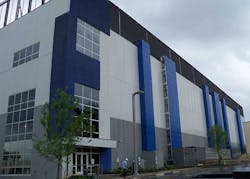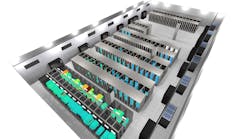Surviving Digital Disruption: Change or Die
The digital economy and digital disruption is basically calling for a restructuring of your business or at least your business model—in the form of digital transformation. In this edition of Voices of the Industry, Sherri Liebo, Senior Vice President of Global Marketing at Digital Realty, asks the question: How will your organization and IT architecture thrive in this brave new world?
Sherri Liebo, SVP, Global Marketing, Digital Realty
Since the year 2000, 50 percent of the traditional companies on the Fortune 500 have disappeared. Why? They failed to stay relevant and competitive in the digital economy and were phased out, according to Constellation Research. More companies will likely cease to exist as we move deeper into the era of digital disruption, or what the World Economic Forum refers to as the ‘Fourth Industrial Revolution.’ While our current business landscape sometimes feels like a scene from a futuristic movie, it is now our reality. So how did we get here so fast?
The First, Second and Third Industrial Revolutions made us faster at production and automation, using water, steam, electricity, and ultimately information technology. The previous industrial revolutions unfolded in somewhat of a stage-gated, linear process, making it easier for business leaders to see what was likely to come next, and plan accordingly.
The Fourth Industrial Revolution is much different. By combining physical and virtual reality, the Fourth Industrial Revolution is set to impact everything about our lives, giving way to the concept, the Internet of Everything. The impact of technology will influence pretty much everything about life as we know it—from how we wake up in the morning to deciding what to eat, and even how we relate to the world around us, or the world at a significant distance for that matter.
The future is now coming so fast that we’ve not had the time to envision the impact, scope or velocity of this industrial revolution, nor prepare for it—from an IT perspective, or an overall business stance. It’s like being asked to go from a 2-dimensional world to a matrixed universe overnight.
What’s Driving Digital Transformation?
Technology is making digital dreams come true. That’s the good news. The bad news is that each time a customer has an online experience exceeding all his expectations, his expectations for the rest of the business world automatically rise. The need to meet higher service standards and ensure consistent, quality operations have renewed focus on customer centricity, making it a major driver of digital transformation.
To deliver the level of experience that consumers are becoming accustomed to, customer insight is more critical than ever to enterprises. More importantly, it’s key to maintaining a competitive advantage.
[clickToTweet tweet=”To deliver the level of experience that consumers are becoming accustomed to, customer insight is more critical than ever to enterprises.” quote=”To deliver the level of experience that consumers are becoming accustomed to, customer insight is more critical than ever to enterprises. “]
Addressing customer challenges faster than the competition requires deriving insights from stored data, sharing them with the right people as quickly as possible and using them to enable business decisions faster. So, network speed is more important than ever.
Digital transformation goes hand in hand with business transformation. You can’t really have one without the other, as transformation will require changes in business process and business models. More importantly, it will require IT to serve as a much greater business enabler, which means enterprises will look to data center providers with comprehensive solution sets supporting a greater portion of their IT journey.
In a nutshell, enterprises are looking to address the demands placed on them by digital transformation, such improved agility, security and reliability, through as few service providers as possible. Ideally, through a single one who can deliver all the critical data center, cloud and interconnection services that can enable them to quickly expand their digital capabilities without major capital investment.
How the Right Data Center Can Enable Digital Transformation
- Meet the demands that digital transformation places on you as an enterprise, or on your customers, including mobility needs, by utilizing our high-density data centers purpose-built to support next-generation cloud, enterprise, and IT infrastructure required for high-performance computing across an unparalleled global footprint.
- Broaden the reach of your high-performance networks. Extend your digital capabilities quickly and cost effectively with the ability to connect to multiple clouds in multiple regions from a single platform, or from one data center to many utilizing a densely interconnected ecosystem.
- Improve customer experience by improving your reach. Support more devices and greater mobility from anywhere by leveraging the power of proximity to access all the critical data center, network and cloud elements within a single, secure environment within our data centers.
- Enable digital readiness faster. Expand your digital capabilities with Service Exchange and Connected Campus by utilizing or offering the full interconnection capabilities of our ecosystem including major CSPs, partners, networks and customers that drive your business.
- Reduce complexity of hybrid clouds. Deploy mission-critical applications in a low-latency environment with the industry’s most agile data center solutions provider and accommodate your mission-critical needs by outsourcing IT infrastructure in a secure environment.
- Plan more easily for growth requirement. Utilize a solutions provider offering flexibility and visibility into future needs, and choosing colocation matching your interconnection needs from a variety of options available in-metro.
- Drive greater business benefits for multiple lines of business. Deploy to low-latency high throughout environments and enable development of high-performance networks faster and easier.
Learn more about how our Connected Campus and Service Exchange can help future-proof your IT strategy by offering all the critical data center, cloud and network capabilities tethered together within a single, secure environment through a single provider.
Sherri Liebo is SVP Global Marketing at Digital Realty.





